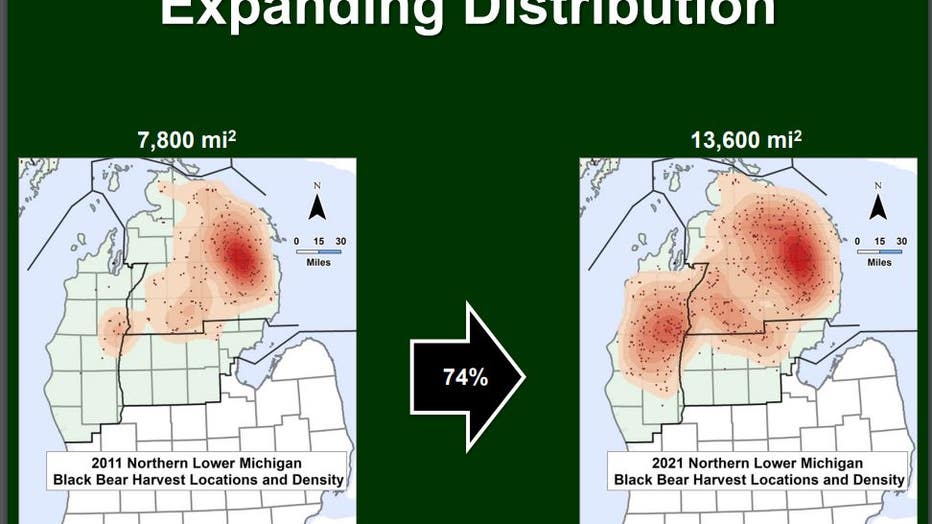Michigan bear populations climbing fast in lower peninsula, more gradually in UP

Trail camera films cougar hunting deer
Trail camera footage captured the moment when a wild cougar in the Upper Peninsula of Michigan caught a deer. Video courtesy of Eli Schaefer
(FOX 2) - Bear numbers in Michigan are up in both the Upper Peninsula and in the northern portion of the lower peninsula, a large wildlife specialist with the state said Thursday.
Estimates from the Department of Natural Resources report there are more than 12,200 bears across the state, with more than 10,200 of those being reported in the U.P. However, it's the lower peninsula that's seeing the largest increase in the number of bears, with a 55% increase in populations since 2012.
The DNR checks in on bear regulations every two years, Cody Norton told the Natural Resources Commission during their monthly meeting.
Bear numbers in the U.P. have risen by 21% since 2012, which was when the DNR reduced the number of licenses it hands out to hunters by 30%. According to a map provided by the DNR on its slideshow, the biggest portion of successful bear harvests was in the western UP.
MORE: Rare white black bear caught on Michigan trail camera
In assessing the state's management of its bear species, the DNR balances both harvest and population numbers to maintain a healthy number of them in Michigan:
- For the UP, the DNR is aiming to increase the bear population at a slower rate than it's currently rising by increasing the number of harvests slightly
- For the northern lower peninsula, the DNR will look to slow population growth until it reaches a stable population. The number of bears has risen by more than nearly tripled since 1992.
The population spike in the northern lower peninsula has translated into a westward expansion of bears into Wexford, Lake, and Newaygo counties. This has led to hunters finding success around the region - as well as an increase in the percentage of successful hunts per year.
However, the widening habitat being used by bears is also leading to more bear nuisance reports around Traverse City. The biggest concentration of bear-related issue reports were near Marquette.

The change in bear populations in Michigan's lower peninsula. Graphic via Michigan DNR.

